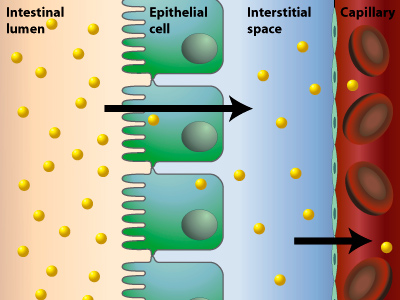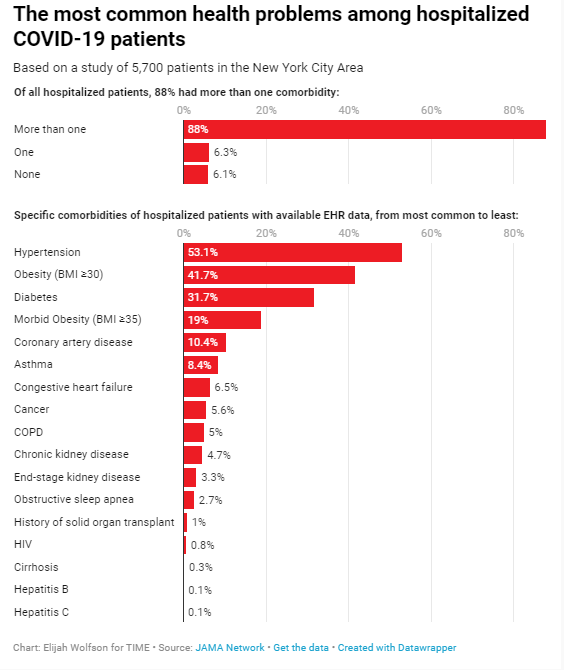
The Gastrointestinal (GI) system is the metabolic center that connects all other systems. The gut is the metabolism, the system that takes in and breaks down our nutrients allowing us to build energy, and then recycles, restores and eliminates the internal by-products when we rest and fast. The intestines are designed to receive, distribute, and recycle matter and energy in a continuous flow. They are related to every system of the body.
All systems of the body are related. What happens in gut, happens in systems of the body.
We learn to see all systems as related; we see metabolic health on a continuum.
Metabolism and Metabolic Syndrome bring together our systems into one unifying paradigm for cause, effect and antidote.
Metabolism - What is it?
Definition of Metabolism, Catabolism, Anabolism
• Metabolism is the set of life-staining chemical transformations within our cells. These reactions allow us to grow and reproduce, maintain our structures, eliminate waste material and respond to our environments.
• Catabolism, a part of metabolism, is the breakdown in living organisms of complex substances into simple ones together with release of energy.
• Anabolism, a part of metabolism, is the synthesis in living organisms of complex substances (e.g., living tissue) from simple ones together with the storage of energy.]
In the new contemporary paradigm, we have come to a more comprehensive definition of metabolism. Mark David PhD (2014) of the Institute of the Psychology of Eating expands our concept of metabolism. He calls it the sum total of all the chemical reactions in the body, plus the sum total of all our thoughts, feelings, beliefs and experiences.
Astounding research in the mind-body sciences has exquisitely highlighted the connection between what we think and feel, and the chemistry of the body. Science has revealed the profound effects of the chemistries of stress, relaxation, pleasure, depression, and the effects that even prayer, pets, and other people have on our metabolic lives. Simply put, mind influences chemistry.
Indeed, everything that happens in our world from birth until death is part and parcel of metabolism. All sensory input that impacts the human nervous system undergoes some form of digestion, assimilation, and elimination. In this very moment, we’re metabolizing elements of our last meal, words on this page, and important details of pivotal events that happened earlier this week or even previously in our lives. We metabolize our dreams, fears, and fantasies, our ups and downs, our jealousies and joys, the beauty that surrounds us, the betrayals we’ve suffered, and our fortunes and misfortunes – this in addition to all the frozen yogurt, chicken sandwiches, and sushi we eat. No wonder we take so many digestive aids.
(David, 2014, http://psychologyofeating.com/new-definition-metabolism/)
Metabolic Multiplier Gives Another Definition
Metabolism is basically every chemical process in your body necessary for the maintenance of life! It is the biological theory of everything!
You get the idea? It is everything your body does. So Metabolic Syndrome is very serious. It can impact all the varied functions of your body. Conversely, metabolic health is also important as it can optimize all these same functions making you run like a well-oiled machine!
- Energy production? Metabolism.
- Building new tissues? Metabolism.
- Breaking down old tissue to repair it? Metabolism.
- Elimination of waste? Metabolism.
- Growth? Metabolism.
- Cellular reproduction? Metabolism.
- Warding off disease? Metabolism.
metabolicmultiplier.org
Metabolic Syndrome Education
Metabolic Syndrome and Viral Pathogenesis: Lessons from Influenza and Coronaviruses
Metabolic syndrome (MetS) is a cluster of metabolic disorders that can lead to serious health conditions. Established features of MetS are visceral adiposity, insulin resistance, glucose intolerance, endothelial dysfunction, hypertension, and dyslipidemia. MetS is clinically diagnosed as the co-occurrence of three or more of these pathologies, which are interrelated because of overlapping metabolic pathways and pathophysiologic mechanisms J. Virol. doi:10.1128/JVI.00665-20
See Markers and More Markers of Metabolic Syndrome below.
Goals
- identify and recognize Metabolic Syndrome (MetS)
- educate people to support a beneficial transformation of metabolic health
- heal and seal the gut wall and reseed good microbes
Metabolic Syndrome is a set of biological markers within us indicating metabolic damage to our bodies. The gut is the initial target with microbial infection. That damage is considered the foundation and pathway to the major degenerative pandemics: diabetes, obesity, cardiovascular disease and cancer. The gastrointestinal system mouth to anus is the source of damage.
Working with Metabolic Syndrome through its causes rather than symptoms allows the body to regenerate.
Markers of Metabolic Syndrome
Glucose is a monosaccharide or single molecule sugar. Sucrose and High Fructose Corn Sugar (syrup), approximately 55% fructose and 45% glucose, are laboratory altered polysaccharides or complex sugars. Excess glucose raises insulin levels. (> = greater than, < = Less than).
Normal glucose; 70 to 99 mg/dL
Prediabetic glucose: 100 to 125 mg/dL
Diabetic glucose: >126 mg/dL on more than one testing occasion
Insulin is a peptide or protein hormone produced by the beta cells in the pancreas. Insulin regulates the metabolism of carbohydrates and fats by promoting the absorption of glucose from the blood to the muscles and fat tissue. Insulin also stimulates the production and storage of triglycerides and proteins.
Normal insulin: 5-20 mcU/mL (Note: mcU/mL = micro unit per milliliter)
A1c is measured in percentage of blood hemoglobin glycated or coated with glucose and measured over three months.
Normal A1c: 4% – 5.6%
Prediabetic A1c: 5.7% – 6.4%
Diabetic A1c: >6.5%
High-density lipoprotein (HDL) cholesterol picks up excess cholesterol in blood, returns it to liver where it’s broken down and removed from body. Cholesterol levels are measured in milligrams (mg) of cholesterol per deciliter (dL) of blood or millimoles (mmol) per liter(L).
HDL cholesterol: ≥40 mg/dL in men and ≥ 50 mg/dl in women
Normal range: 60 mg/dL (1.6 mmol/L) or above
Low-density lipoprotein (LDL) particles are proteins that encapsulate the lipid cholesterol and transport it in the bloodstream to cells. The smaller the particle, the greater the number, the more damage is possible. The LDL particles are smaller than human cells and are able to penetrate the endothelium of the circulatory system. As a result, higher levels of LDL in the bloodstream post a risk factor for coronary heart disease (CHD) and atherosclerosis.
Normal: <130 mg/dL
Very Low-density Lipoproteins (VLDL) are smaller than LDL’s hence their greater ability to penetrate the endothelium. VLDL’s are produced by the liver, transport triglycerides in the bloodstream and supply fat to the cells.
Normal: <20 mg/dl
Triglyceride is a blood lipid or fat created in the liver through the metabolism of sugar. Triglycerides provide the body with energy. In excess, they create fatty liver progression and visceral fat, including abdominal visceral fat, the most serious kind.
Normal: <150 mg/dl
Cholesterol is a blood lipid made by every cell of the body with 25% made in the liver. Cholesterol builds cell walls, manufactures bile acids, produces vitamin D and helps make certain hormones.
Normal: < 200 mg/dL
Alanine transaminase (ALT) is an enzyme present in many tissues and body fluids especially the liver. The enzyme is released into the bloodstream as a result of tissue injury in the liver such as fatty liver and hepatitis.
Normal: 5-45 U/L
Hypertension is a condition present when blood flows through the blood vessels with a force greater than normal or the blood vessels themselves have lost their elasticity.
According to Lustig (2013):
High insulin acts on blood vessels causing the smooth muscle cells that surround each blood vessel to grow more rapidly that normal. This process tightens the artery walls and promotes high blood pressure. (Fat Chance, p. 96)
Systolic Blood Pressure: < 120 mmHG
Diastolic Blood Pressure: < 80 mmHG
Uric acid is a breakdown product of purine and fructose metabolism and excreted in urine. Uric acid forms crystals. High blood concentrations can lead to gout, kidney stones and hypertension.
Normal: Men 3.4–7.0 mg/dL; Women 2.4–6.0 mg/dL
More Markers of Metabolic Syndrome
Abdominal Visceral Fat – inflammatory fat that builds up around the waist and is considered one of most serious markers of MetS.
Fatty liver – found through MRI and CT scanning plus various blood tests.
Nonalcoholic fatty liver disease (NAFLD) is a common complication of childhood obesity and an ominous marker of the metabolic syndrome (1). Indeed, children with NAFLD exhibit insulin resistance, glucose intolerance, hypertriglyceridemia (1), and cardiovascular disease (2, 3).
A Low ω-6 to ω-3 PUFA Ratio (n–6:n–3 PUFA) Diet to Treat Fatty Liver Disease in Obese Youth
https://doi.org/10.1093/jn/nxaa183
Skin conditions: acne, hives, eczema, psoriasis, dermatitis herpetiformis, acanthosis nigricans, and skin tags.
Hyperinsulinemia, hypoglycemia, insulin resistance signify that glucose and insulin are out of control. The insulin is too high, too low or won’t allow glucose into cells.
Hypoglycemic Support Foundation
Obesity and weight issues
Twenty percent of the obese population has a normal metabolic profile, whereas up to 40 percent of normal-weight people have an abnormal profile. Knowing where you stand is crucial to taking steps to prolong your life.
(Lustig, 2013, p. 93)
Cognitive impairment and neurological issues such as Alzheimer’s, dementia, autism spectrum, Parkinson’s, mood disorders, brain cancer, depression, panic, anxiety, phobia are part of the disintegration of the gut wall. Time to rebuild.
Endothelial and epithelial dysfunction
See diagrams in section below.
Cause
The Unified Theory of Metabolic Syndrome
My hypothesis is that inflammation of the intestines is the initiation of Metabolic Syndrome. The epithelial cells you see in the diagrams below are a single layer. They can be healthy or damaged or on a continuum. Epithelial cells of the gut wall are damaged by acids, gasses and other metabolites from microbial action on processed food, sugar and seed oils.
Inflammatory Bowel Disease (IBD) sets the stage for Metabolic Syndrome.
Read my article in Natural Awakenings ‘Everyday Gut Health’ to understand further.
Watch the video by Robert Lustig MD to understand processed food connection to causation.


Comorbidity and Covid

Comorbidity is the presence of one or more diseases, syndromes or disorders co-occurring with other diseases, syndromes or disorders. Comorbidity also includes mental and behavioral conditions co-existing with physical conditions.
Comorbidity
Many of the deaths from the virus are due to comorbidity. Comorbid means people have multiple health issues that are manifestations of their metabolic syndrome. Remember, 88% of people have metabolic syndrome. Few people are healthy anymore. Markers of metabolic syndrome: high blood sugar, insulin, fat and blood pressure, skin conditions and fat around the waist line called abdominal visceral fat. If people have the comorbid situation we know already their immune system is compromised. The gut is already damaged.
Metabolic Syndrome Charts


